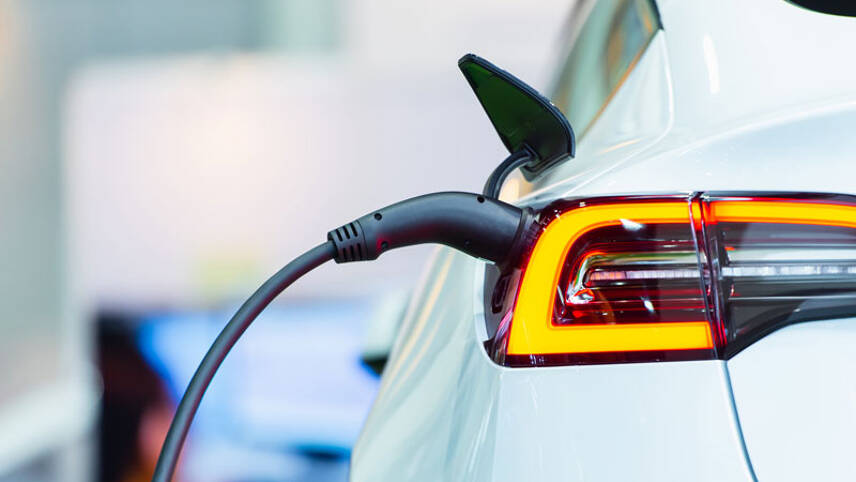This premium content is exclusive to edie Members.
To find out more about edie Membership, please click below.
If you are an existing member, login here

The Science-Based Targets Initiative (SBTi) last week lifted a temporary block on the verification of 1.5C-aligned emissions targets by automotive manufacturing companies.
This had been in place while the Initiative developed new guidance on how these firms should measure and credibly reduce emissions generated in the use of their components and vehicles. The new guidance was described by SBTi co-founder Alberto Carrillo Pineda as “reflective of the scientific imperative for this critical transformation” – meaning the journey to net-zero for OEMs.
It was subsequently revealed that EV sales reached record global highs over the past 12 months, surging 35% year-on-year.
But not all OEMs are created equal. Some are leading the charge for EVs while others are lagging. Moreover, the SBTi requirements will cover upstream emissions in supply chains and those generated in manufacturing, as well as those from vehicle use.
Clean transport advocacy network Lead the Charge recently published a leaderboard comparing and contrasting how automakers are reducing emissions across the board. Here, we pick out the key findings.
Vehicle emissions
Tailpipe emissions account for 75% of the road transport sector’s emissions by the SBTi’s estimates.
So, whether an automaker has increased its EV sales and has credible plans to continue doing so is a key consideration when assessing its sustainability efforts.
Of the 18 companies assessed by Lead the Charge, Tesla is the only one with a fully-electric portfolio.
Chinese state-owned company GAC saw EVs accounting for 61% of its sales in 2023 while the proportion for BYD, which is also China-based, was 47%. BYD notably stopped selling purely petrol and diesel-powered cars two years ago.
At the bottom of the table is Honda. Only 0.5% of Honda’s sales last year were accounted for by electric models. Toyota didn’t fare much better, at 1%.
Pure electric vehicles also accounted for less than 10% of 2023 sales for Ford, Stellantis, Kia, Renault and Nissan.
Low-carbon supply chains
While GAC and BYD are swiftly electrifying their portfolios and succeeding with their EV marketing, Lead the Charge ranked these firms extremely poorly in terms of the actions they are taking to phase out fossil fuels from their business operations, value chains and the wider economy.
Neither scored more than 3% on this indicator.
Kia, Honda, Toyota and SAIC – all of which are also headquartered in Asia – did not score much higher. SAIC was given just 1% and the other firms all scored 7% or lower.
In contrast, while some US-based and European automakers are making slower progress in electrifying their portfolios, they are forging ahead with efforts to reduce emissions and switch to clean energy in manufacturing and supply chains.
Ford comes top of the table overall. A score of 29% on reducing the environmental impact of its operations and supply chains helps to level out the fact that just 3% of its sales were EVs in 2023.
Ford announced 18 months ago contracts with three strategic steel suppliers to secure lower-carbon materials for integration in vehicles from 2023. This built upon a First Movers Coalition pledge for Ford to use 10% certified carbon-neutral steel by 2030.
The firm has also updated its supplier code of conduct to stipulate that suppliers should set and report against science-based emissions reduction targets.
Leading the Charge did give Mercedes-Benz and Volvo higher scores for reducing supply chain emissions than Ford. Both received scores of 36%. Tesla also scored a healthy 31%.
Mercedes-Benz is aiming to source more than 200,000 tonnes of lower-CO2 steel by 2030 and has a vision to ‘green’ all of its steel supply by 2039 – the date by which it wants to operate a net-zero value chain. Suppliers of all materials and components have been asked to pledge to support this goal.
The firm has also embedded new recycled content targets into supplier contracts.
As for Volvo, the business has a 2040 net-zero target for the whole value chain and has pledged to set 1.5C-aligned interim targets. It committed late last year to reduce the embodied emissions of its cars by 75% by 2030 against a 2018 baseline through adopting recycled content, near-zero emission aluminium and lower-carbon ocean freight options.
Lead the Charge attributes increased ambitions for clean supply chains in the US and EU partly to policymaking.
The US’s Inflation Reduction Act (IRA) set aside a total of $369bn for supporting low-carbon industries and climate adaptation, including tax provisions for firms that generate or use renewable electricity and/or low-carbon hydrogen.
And, in the EU, the Carbon Border Adjustment Mechanism is a factor. Moreover, the bloc is prepping a rival to the IRA in the form of the Net-Zero Industry Act. The Act is unlikely to pass ahead of this summer’s elections but will initially set aside €250m for low-carbon focus industries such as automaking.


Please login or Register to leave a comment.